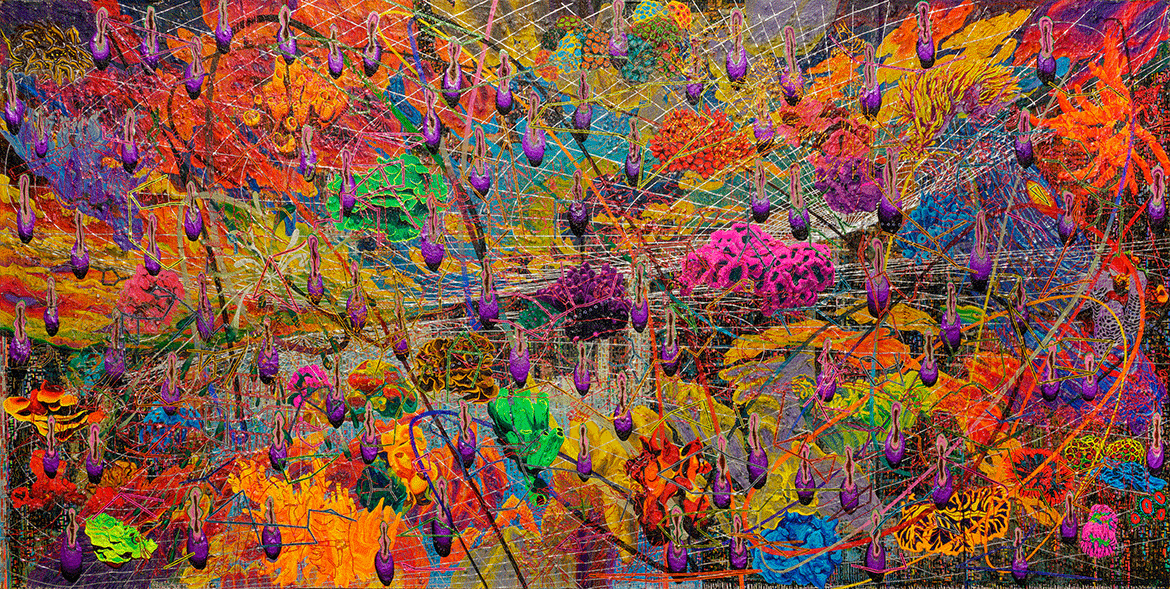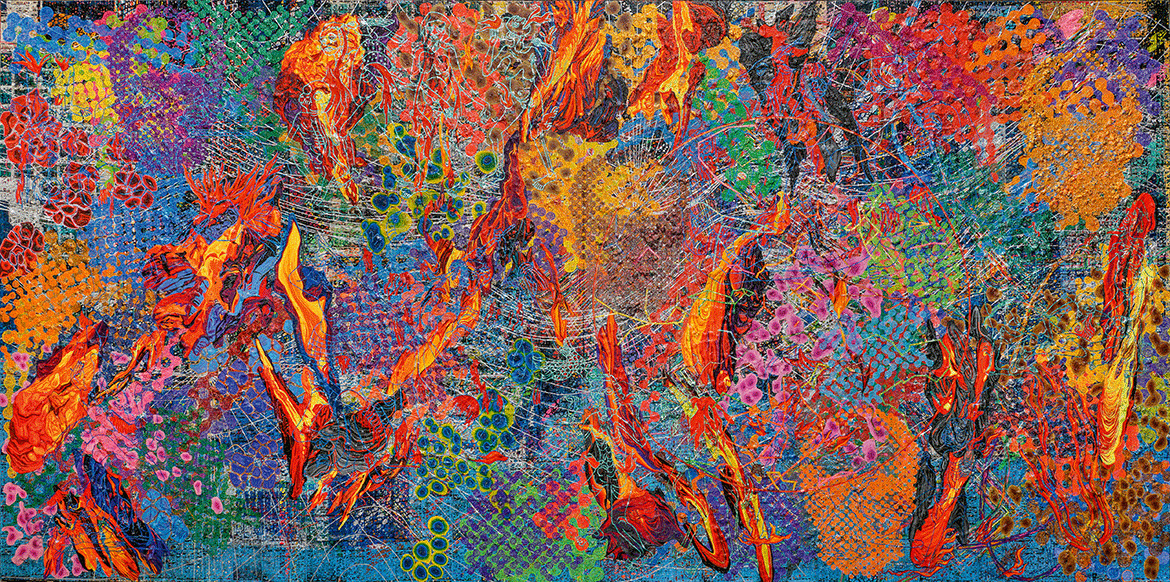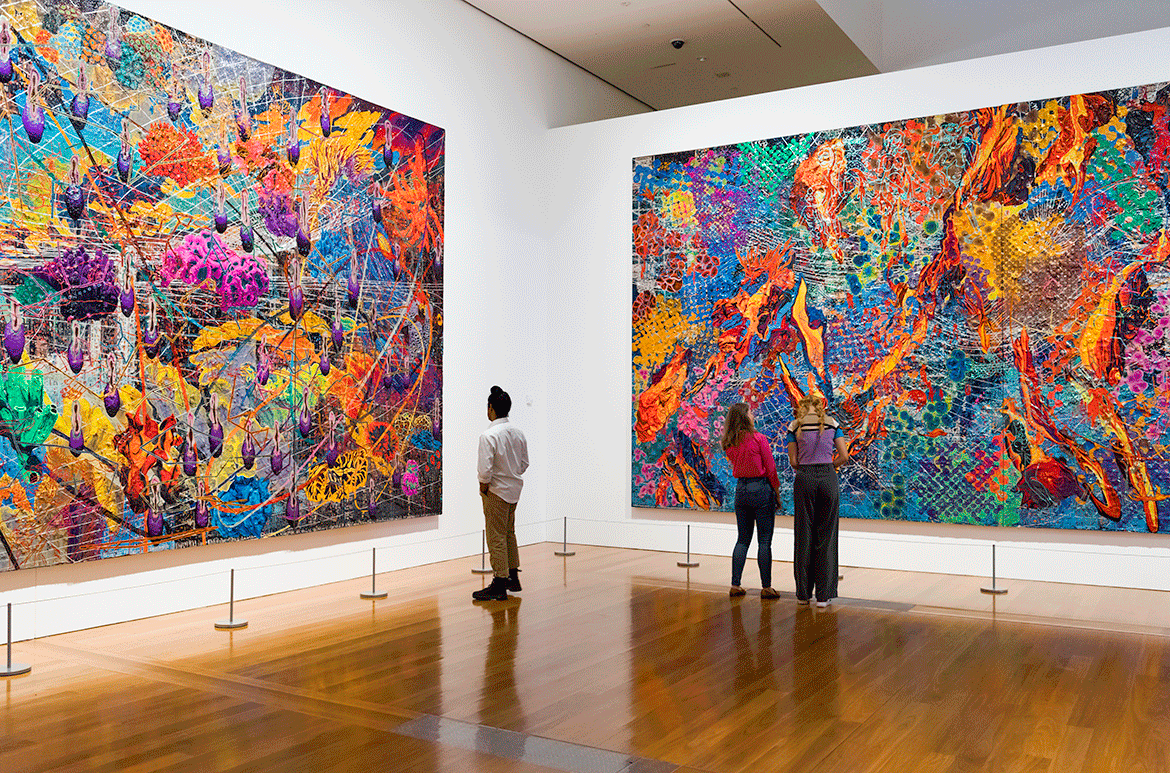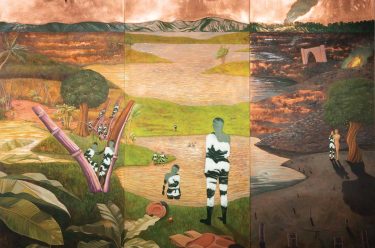Thasnai Sethaseree is passionately interested in how power and seduction fold into state and commercial imagery — particularly in his homeland, Thailand — and his practice investigates the relation of images to political projects dating from the Cold War onwards. His large-scale collages are distinguished by their iconography and the substantial collaging of cut or shredded coloured paper, a style based on a traditional Thai paper-cutting technique.
It’s unclearly clear, as yet incomplete 2017–21 is the result of more than a year of the artist’s research and has taken almost three years to create. Comprising 30–40 layers of paper on material, including stretched Buddhist monks’ robes, the triptych employs specific papers as content within compositions associated with structural problems in modern and contemporary Thailand, and beyond.
Watch | Installation time-lapse
Thasnai Sethaseree ‘It’s unclearly clear, as yet incomplete’ 2017-21



For Sethaseree, this is an historical project: the authoritative use of imagery or aesthetics in Thailand is evident. The references to Hell, Heaven and Earth suggest the triptych is equated with physical, spiritual and mythological zones of human existence. While appearing abstract from a distance, this cosmos is situated in urban Bangkok. The initial layer of each work is a photograph of the skylines of three of Bangkok’s financial and business districts — Silom, Pratunam and Siam Square areas — inverted, as if the artist hopes to reveal the underbelly of these districts. A flux of forms, defined by paper strips, are suspended on top. Images of cancer cells, scientific diagrams of tumours, prisms, images of the twilight sky, biological forms, lava flow, ghosts and skulls, ocean creatures, perspective images and sky maps from the date of coups in 2014, 2006 and 1991 respectively are layered together. The latter — maps charting the stars on the dates chosen for political disruption — reflect the artist’s critique of the fickle relationship with belief systems and ethics he observes in Thailand’s leaders, whose decisions often rely on irrational omens for success.
The triptych is a type of psychogeography of imaginary and historical social realities; in it, Sethaseree interweaves imagery of the final holy war from the Ramayana, the hell from the Buddhist Tribhum and the 1976 student massacre. The central work includes paper printed with Paul Simon’s lyrics for the 1965 song ‘The Sound of Silence’ (suggesting ideas of censorship and diversion); text of the epic Ramayana is found amidst the shredded paper in the panel connoting Heaven; and a multitude of lottery tickets (a common expenditure for Thais) appear in the medium of the work on the right, depicting Hell. For the artist, the images form a type of historiography of Thainess in its particular mix of rational and sacred, order and improvisation, pre-modern and modern.
Sethaseree’s triptych confronts what he considers the immorality of easily consumed spectacle (in a nation where royal and military pomp and ceremony are legendary) and hints at the trust in chance, profiteering, sickness and corruption that he finds in Thai modern and contemporary culture. Visual magnificence and splendour are warning signs for what lies beneath.
Dr Zara Stanhope is Director, Govett-Brewster Art Gallery/Len Lye Centre, New Plymouth, and former Curatorial Manager, Asian and Pacific Art, QAGOMA
This is an edited extract from the publication The 10th Asia Pacific Triennial of Contemporary Art available in-store and online from the QAGOMA Store.
‘The 10th Asia Pacific Triennial of Contemporary Art’ / Queensland Art Gallery and Gallery of Modern Art, Brisbane / 4 December 2021 to 25 April 2022
#QAGOMA


